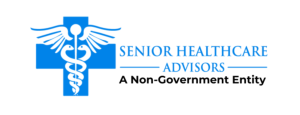Medicare Part D | Prescription Coverage Updates

Understanding Medicare Part D Prescription Drug Coverage
If you’re enrolled in Medicare or planning to join soon, it’s important to understand how Medicare Part D prescription coverage works. This optional benefit helps cover the cost of prescription medications and is available through private insurance companies approved by Medicare.
What Is Medicare Part D?
Medicare Part D is a federal program that helps reduce out-of-pocket prescription drug costs for Medicare beneficiaries. Part D plans are offered by Medicare-approved insurance providers, and each plan has its own formulary — a list of covered medications.
To get Part D coverage, you must be:
Enrolled in Medicare Part A and/or Part B
Living in the plan’s service area
You can get Part D coverage either by:
Joining a stand-alone Medicare Prescription Drug Plan (PDP), or
Enrolling in a Medicare Advantage plan (Part C) that includes drug coverage (MA-PD)
How Medicare Part D Coverage Works
Each Part D plan sets its own monthly premium, deductible, and cost-sharing amounts. Comparing plan options annually helps ensure you’re getting the coverage that meets your current medication needs.
Understanding Drug Tiers and Costs
Drugs are placed into tiers that determine your cost at the pharmacy.
Generic drugs usually cost less
Brand-name or specialty drugs may have higher copayments
Review the plan’s Summary of Benefits and Evidence of Coverage before enrolling. This ensures you understand your costs and the rules for using network pharmacies.
When to Enroll in Medicare Part D
You can enroll in a Part D plan during:
Your Initial Enrollment Period (around your 65th birthday)
The Annual Enrollment Period (October 15 – December 7)
If you delay enrollment and don’t have creditable drug coverage, you may face a late enrollment penalty added to your premium.
Staying Informed About Your Medicare Options
Choosing the right Medicare prescription drug plan is an important part of managing your healthcare costs. You can compare plans and estimate costs using the official Medicare.gov Plan Finder or by speaking with a licensed insurance agent.
Regularly reviewing your coverage helps ensure your prescriptions remain covered and your costs stay manageable from year to year.
Speak To a Licensed Sales Agent
Connect with a licensed sales agent to explore your Medicare Advantage options
We do not offer every plan available in your area. Currently, we represent [8] organizations which offer 8000 products in your area. Please contact Medicare.gov, 1-800-MEDICARE or your local State Health Insurance Program (SHIP) to get information on all of your options. Senior Healthcare Advisors,LLC., in California – SCH Insurance Agency represents Medicare Advantage [HMO, PPO, and PFFS] organizations and stand-alone PDP prescription drug plans that have a Medicare contract. Members may receive a monthly or quarterly allowance in the form of a benefits prepaid card to pay for a wide range of approved healthy groceries and utilities. Unused amounts will expire at the end of the month or quarter. Enrollment depends on the plan’s contract renewal. Not all plans offer all of these benefits. Benefits may vary by carrier and location. Limitations and exclusions may apply. Senior Healthcare Advisors, LLC., in California – SCH Insurance Agency is not connected/endorsed by a government entity. You also agree to the Terms and Privacy Policy. The benefits mentioned are part of a special supplemental program for the chronically ill. Not all members qualify. The benefits mentioned are Special Supplemental Benefits for the Chronically Ill (SSBCI). You may qualify for SSBCI if you have a high risk for hospitalization and require intensive care coordination to manage chronic conditions such as Chronic Kidney Diseases, Chronic Lung Disorders, Cardiovascular Disorders, Chronic Heart Failure, or Diabetes. For a full list of chronic conditions or to learn more about other eligibility requirements needed to qualify for SSBCI benefits, please refer to Chapter 4 in the plan’s Evidence of Coverage. Part B Premium giveback is not available with all plans. Availability varies by carrier and location. Actual Part B premium reduction could be lower. Enrollment in a plan may be limited to certain times of the year unless you qualify for a Special Enrollment Period or you are in your Medicare Initial Enrollment Period.
